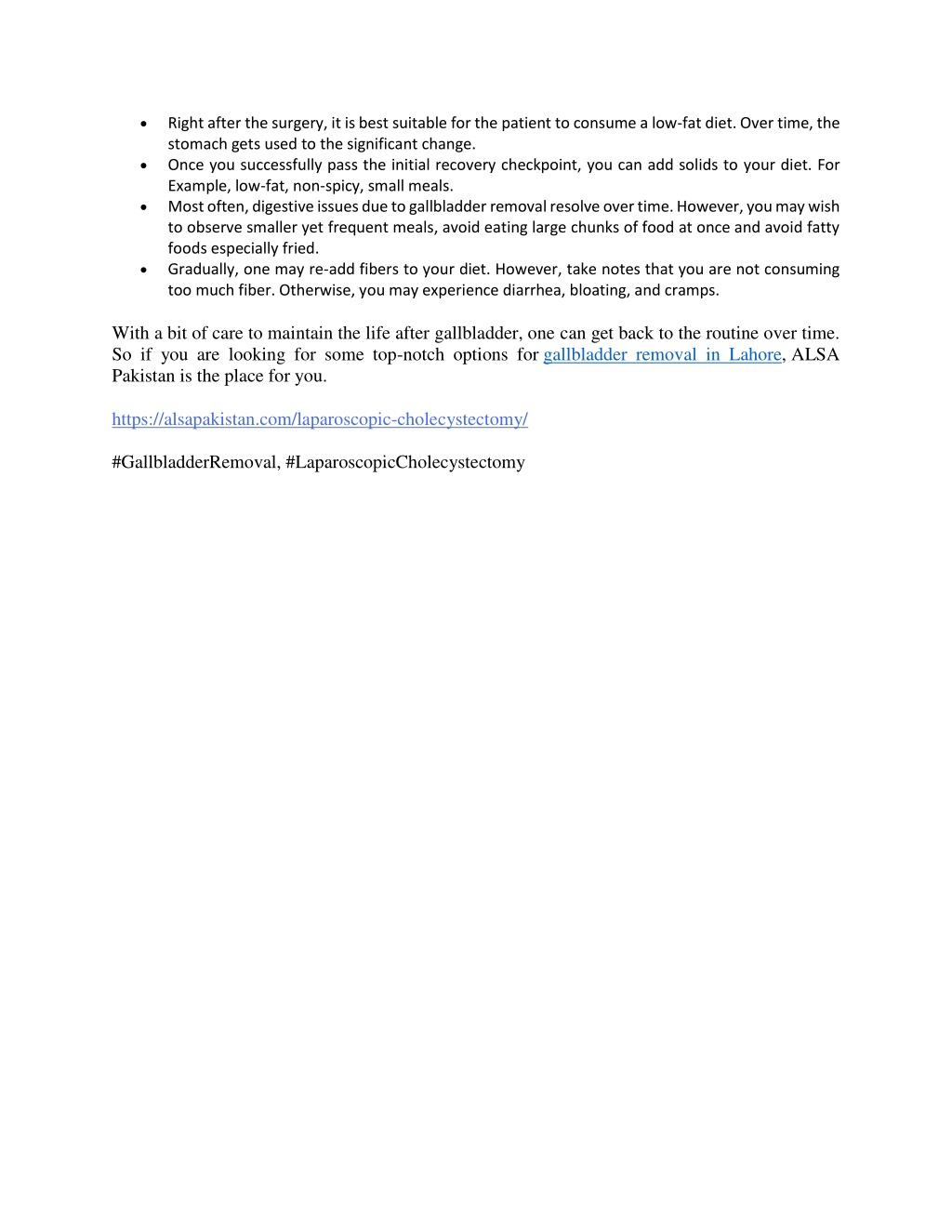

Seven patients had a mild CBD injury, generally a small tear, that needed only suturing repair. I had stage 4 bile duct cancer and went to my liver 10 years ago. Stree is worst than anyting you can do to your body. It takes time for signs and symptoms to develop because after you eat your body releases large amounts of insulin to absorb the sugars entering your small intestine. 2 3 The chronic condition is diagnosed in approximately 10 of postcholecystectomy. Symptoms occur in about 5 to 40 percent of patients who undergo cholecystectomy, 1 and can be transient, persistent or lifelong. wounds can be safely removed 5 days later and there is no need to remove the stiches as they. I mean 6 cups of water and you will be fine. Late dumping syndrome starts 1 to 3 hours after you eat a high-sugar meal. Postcholecystectomy syndrome ( PCS) describes the presence of abdominal symptoms after a cholecystectomy (gallbladder removal). 12 13 In our series, a bile leakage was found in 19 (7%) patients, in which 12 had a loose surgical clip at the cystic duct remnant that was treated laparoscopically by clipping. 30+ Years Experience in Laparoscopic Gall Bladder Surgery. Intraperitoneal fluid collections in the gallbladder bed occur in up to 14% of the patients who had a cholecystectomy, and most will resolve spontaneously however, collections persisting for more than a week or fluid outside the gallbladder bed should raise the suspicion of a biliary leak or injury. The most common sites of biliary leaks include injured bile ducts, the cystic duct stump, and the gallbladder stump. A bile duct injury usually manifests as a leak, stricture or transection. The leading causes of bile ductal injury include the erroneous cutting of bile ducts, inadvertently placed clips or ligatures, and periductal bile leakage resulting in fibrosis and thermal injury owing to electrocautery.

The reported rate of bile duct injuries is slightly higher using laparoscopic surgery than open surgery (0.5% and 0.15%, respectively).


 0 kommentar(er)
0 kommentar(er)
